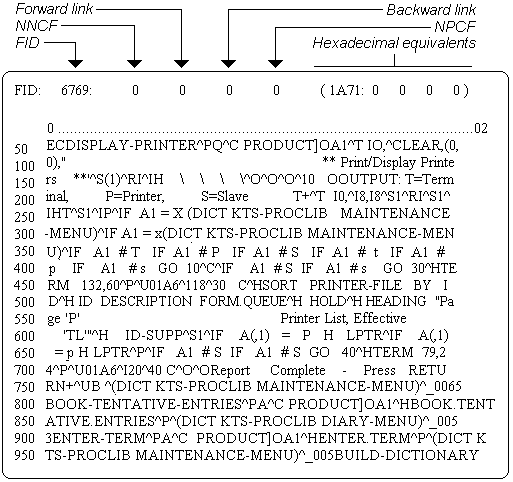
The DUMP command displays the contents of disk frames, including information about forward and backward links.
Format
|
DUMP frame-ID1 [–frame-ID2] [options] |
Parameter(s)
|
frame-ID1 |
Number of the frame you want to display. |
|
|
frame-ID1–frame-ID2 |
Specifies a range of frames. |
|
|
options |
G |
Group option. All forward-linked frames attached to the specified frame display. Used with the U option, the G option displays all backward-linked frames in the group. |
|
L |
Link option. Only frame link information displays; no data displays. |
|
|
N |
Suppresses automatic paging. |
|
|
P |
Sends output to the printer. |
|
|
U |
Traces data or links logically forward using backward links instead of the default forward links. |
|
|
X |
Displays data in hexadecimal format rather than ASCII. |
|
Description
The frame ID number can be either decimal or hexadecimal. Hexadecimal frame IDs must be preceded by a dot (e.g., .1B37). If you specify a range of hexadecimal frame IDs, omit the hyphen (e.g., .1B37.1B3A).
The DUMP command displays backward and forward link information first, then displays in ASCII format the data contained in the frame (unless the X option is used). Output from the DUMP command looks like this:

The top line contains the linking information, which is contained in the first 12 bytes of every frame. Linking information displays in both decimal and hexadecimal format and includes this information:
|
FID |
Frame ID number. |
|
NNCF |
Number of next contiguous frames. |
|
forward link |
Frame ID of the next forward-linked frame. |
|
backward link |
Frame ID of the previous backward-linked frame. |
|
NPCF |
Number of previous contiguous frames. |
The data displays in lines of 50 bytes each. The line numbers in the first column indicate the displacement from the beginning of the frame.